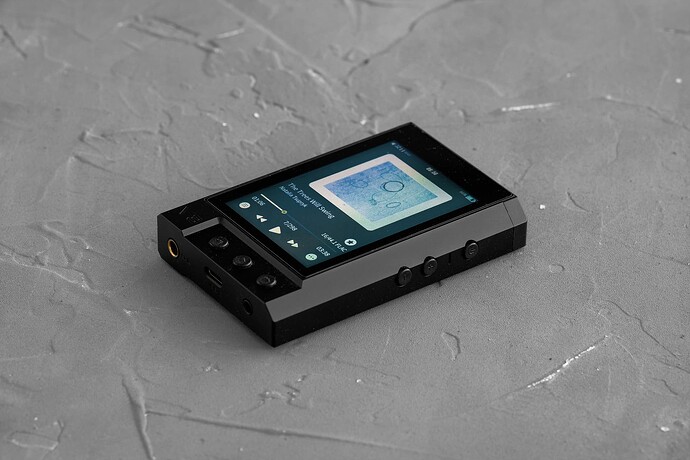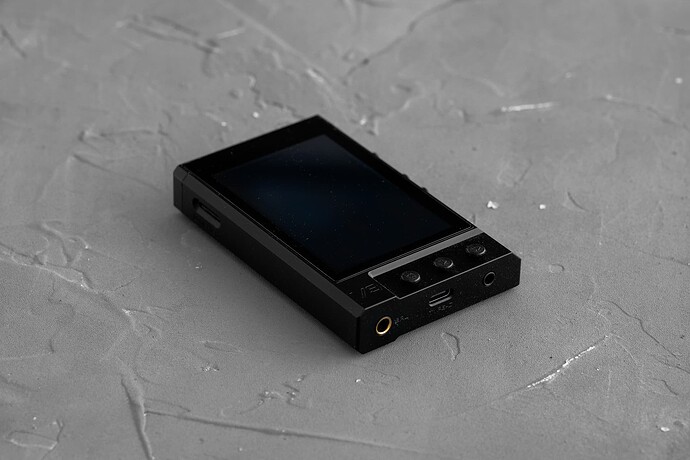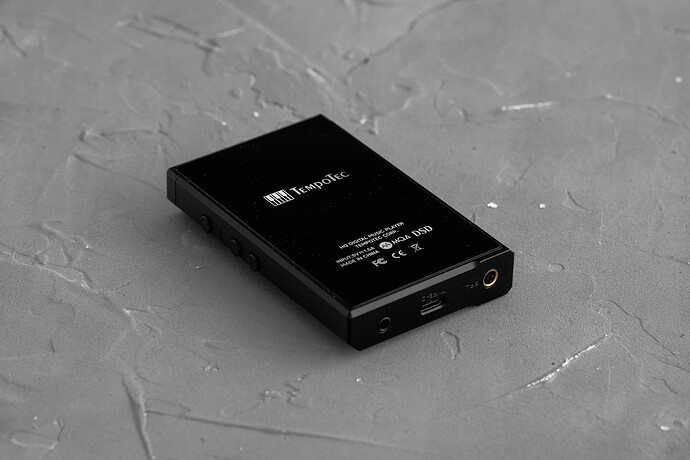Since its’ slightly bigger brother running on Android got itself a dedicated thread (click) , I felt like creating a topic for Variation 3, dubbed as V3, could also come in handy.
You can find it’s official page on: TempoTec V3 | Digital Audio Player, HiFi usic player &DAP
Here’s my take on it after using it for over 3 weeks.
Just to say upfront: there have been quite a few brief reports and opinions regarding bugs and technical issues.
Therefore: regardless of how you perceive the following text, I cannot recommend this device with a clear conscience. It seems like many units did not pass any kind of quality control. Beware.
Let’s begin.
In terms of physical aspects, it’s very good.
The player itself is made of a single block of powdered aluminum with a small plastic insert on top, likely due to the placement of Bluetooth and WiFi antennas in that area.
It’s sturdy yet ergonomic. No creaks, no loose elements. Audio plugs feel sturdy, but, luckily, connection /disconnection is easy.
I’m not a fan of glassy back, which looks like it’s there only to collect scratches — especially since there’s no case included, not even a cheap TPU one.
Two sets of buttons are sensibly arranged and offer a satisfying click. This is crucial because there’s no volume knob here.
Two things that could’ve used some improvement are: the display and the microSD card slot. The display is what it is — almost like taken of from a budget mobile phone from 10 years ago. Contrast, saturation, and viewing angles are just average. Fortunately, the touch response is oh-kay. Maybe I expect too much from a device in this price range, but…
The microSD card sits quite deep, and the slot itself lies in a valley of sorts. Slightly longer nails will definitely come in handy.
How does it sound?
Under the hood, the manufacturer included a dual AK4493SEQ chipset, along with 2x OPA1652 responsible for preamp and 4 pieces of OPA1688 amplifiers. I’ve seen this somewhere before… Ah, in the TempoTec March III, which happens to be lying next to my keyboard.
As a result, both devices (V3 and March III) sound (to me) exactly the same. Moreover, even the volume levels match. This is what I wrote in the March III review:
The sound is excellent. Dynamic, detailed, spacious. Slightly warmer and more weighty than what the Tanchjim Space provides me with its dual CS43131 chipset. The background is very quiet, with no digital noise.
From a user perspective:
Some promotional materials mentioned support for 5 GHz WiFi - unfortunately, it’s only 2.4 GHz. Similarly, regarding Bluetooth—despite the promised 5.1 standard, the photo of the device’s internals showed that it’s capable of BT 4.2.
Connections are stable; I haven’t experienced random disconnections or anything of the sort.
The V3 runs on a slightly modified HiBy OS, which is quite specific in its nature but functional.
It provides support for streaming from Qobuz (never tested this) and for Tidal, although with the latter, one needs to log in to the service every 24 hours. The manufacturer explains it’s due to some Tidal policy, which doesn’t seem that plausible to me, as UAPP on Android doesn’t require token renewal so frequently, and it’s also a third-party app.
Nevertheless, I get the impression that V3 has slightly more bugs than HiBy OS on HiBy R2 II. Some examples that caught my eye:
- You can’t delete playlists generated directly on the device. HiBy R2 II allows it after long-pressing playlist’s name, which in turn opens a contextual menu. No such thing happens on V3.
- When using Bluetooth headphones, the UI freezes quite regularly. The music still plays, physical buttons still work, and you can control volume or change the track, but the UI itself is unresponsive to the touch. Only restart helps.
- The majority of songs don’t have correctly imported album art, even though it’s included in the file. Scanning the library doesn’t help.
Regarding scanning itself: I didn’t experience any issues with it, but some people reported that large memory cards (≥512 GB) sometimes present with lost folders or import errors.
Other inconveniences reported on forums:
- Small, narrow, almost claustrophobic soundstage and detail-lacking sound. Not to me, but YMMV.
- Some distortions, anomalies in the upper frequency ranges, which can occur at volume levels >50. I don’t go more than ~30 /100 with my IEMs or ~40 /100 with earbuds, so I can’t comment on that.
- Some people experienced volume levels going haywire and spontaneously increasing up, even to the maximum value. It has never happened to me, but just in case, I have set the maximum volume to 50.
When connected to a computer, the V3 can function as a DAC, and it fares pretty well. I didn’t have to download any additional drivers. Zero delays in audio transmission; you can comfortably watch movies without the need for A/V correction.
That’s probably it from me.
Any questions?


